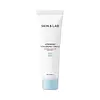What's inside
What's inside
 Key Ingredients
Key Ingredients

 Benefits
Benefits

 Ingredients Side-by-side
Ingredients Side-by-side

Water
Skin ConditioningDicaprylyl Ether
EmollientGlycerin
HumectantDiglycerin
HumectantSqualane
Emollient1,2-Hexanediol
Skin ConditioningInulin
Skin ConditioningSodium Polyacryloyldimethyl Taurate
Emulsion StabilisingAcrylates/C10-30 Alkyl Acrylate Crosspolymer
Emulsion StabilisingPanthenol
Skin ConditioningXanthan Gum
EmulsifyingSodium Hyaluronate
HumectantSodium Hydroxide
BufferingCopper Gluconate
Skin ConditioningCentella Asiatica Leaf Extract
Skin ConditioningZinc Gluconate
Skin ConditioningCitric Acid
BufferingTocopherol
AntioxidantWater, Dicaprylyl Ether, Glycerin, Diglycerin, Squalane, 1,2-Hexanediol, Inulin, Sodium Polyacryloyldimethyl Taurate, Acrylates/C10-30 Alkyl Acrylate Crosspolymer, Panthenol, Xanthan Gum, Sodium Hyaluronate, Sodium Hydroxide, Copper Gluconate, Centella Asiatica Leaf Extract, Zinc Gluconate, Citric Acid, Tocopherol
Water
Skin ConditioningPropanediol
SolventGlycerin
HumectantPhenyl Trimethicone
Skin Conditioning1,2-Hexanediol
Skin ConditioningPentylene Glycol
Skin ConditioningNeopentyl Glycol Dicaprate
EmollientMalachite Extract
AntioxidantAmmonium Acryloyldimethyltaurate/Vp Copolymer
Hydroxyethyl Acrylate/Sodium Acryloyldimethyl Taurate Copolymer
Emulsion StabilisingVinyldimethicone
Acrylates/C10-30 Alkyl Acrylate Crosspolymer
Emulsion StabilisingChlorella Vulgaris Extract
Skin ConditioningGlucose
HumectantHydroxyacetophenone
AntioxidantTromethamine
BufferingButylene Glycol
HumectantDimethiconol
EmollientFructooligosaccharides
HumectantFructose
HumectantMicrocrystalline Cellulose
AbsorbentCaprylic/Capric Triglyceride
MaskingEthylhexylglycerin
Skin ConditioningAdenosine
Skin ConditioningHydrogenated Lecithin
EmulsifyingSorbitan Isostearate
EmulsifyingSodium Hyaluronate
HumectantSodium Phytate
Xanthan Gum
EmulsifyingCellulose Gum
Emulsion StabilisingCeramide NP
Skin ConditioningCynanchum Atratum Extract
Skin ConditioningAlthaea Rosea Flower Extract
Skin ConditioningDipropylene Glycol
HumectantTocopherol
AntioxidantCaprylyl/Capryl Glucoside
CleansingWater, Propanediol, Glycerin, Phenyl Trimethicone, 1,2-Hexanediol, Pentylene Glycol, Neopentyl Glycol Dicaprate, Malachite Extract, Ammonium Acryloyldimethyltaurate/Vp Copolymer, Hydroxyethyl Acrylate/Sodium Acryloyldimethyl Taurate Copolymer, Vinyldimethicone, Acrylates/C10-30 Alkyl Acrylate Crosspolymer, Chlorella Vulgaris Extract, Glucose, Hydroxyacetophenone, Tromethamine, Butylene Glycol, Dimethiconol, Fructooligosaccharides, Fructose, Microcrystalline Cellulose, Caprylic/Capric Triglyceride, Ethylhexylglycerin, Adenosine, Hydrogenated Lecithin, Sorbitan Isostearate, Sodium Hyaluronate, Sodium Phytate, Xanthan Gum, Cellulose Gum, Ceramide NP, Cynanchum Atratum Extract, Althaea Rosea Flower Extract, Dipropylene Glycol, Tocopherol, Caprylyl/Capryl Glucoside
 Reviews
Reviews

Ingredients Explained
These ingredients are found in both products.
Ingredients higher up in an ingredient list are typically present in a larger amount.
1,2-Hexanediol is a synthetic liquid and another multi-functional powerhouse.
It is a:
- Humectant, drawing moisture into the skin
- Emollient, helping to soften skin
- Solvent, dispersing and stabilizing formulas
- Preservative booster, enhancing the antimicrobial activity of other preservatives
Acrylates/C10-30 Alkyl Acrylate Crosspolymer is a synthetic polymer. It is used to thicken and improve the texture of products. Due to its properties, it can prevent water and oil ingredients from separating.
Glycerin is already naturally found in your skin. It helps moisturize and protect your skin.
A study from 2016 found glycerin to be more effective as a humectant than AHAs and hyaluronic acid.
As a humectant, it helps the skin stay hydrated by pulling moisture to your skin. The low molecular weight of glycerin allows it to pull moisture into the deeper layers of your skin.
Hydrated skin improves your skin barrier; Your skin barrier helps protect against irritants and bacteria.
Glycerin has also been found to have antimicrobial and antiviral properties. Due to these properties, glycerin is often used in wound and burn treatments.
In cosmetics, glycerin is usually derived from plants such as soybean or palm. However, it can also be sourced from animals, such as tallow or animal fat.
This ingredient is organic, colorless, odorless, and non-toxic.
Glycerin is the name for this ingredient in American English. British English uses Glycerol/Glycerine.
Learn more about GlycerinSodium Hyaluronate is hyaluronic acid's salt form. It is commonly derived from the sodium salt of hyaluronic acid.
Like hyaluronic acid, it is great at holding water and acts as a humectant. This makes it a great skin hydrating ingredient.
Sodium Hyaluronate is naturally occurring in our bodies and is mostly found in eye fluid and joints.
These are some other common types of Hyaluronic Acid:
Learn more about Sodium HyaluronateTocopherol (also known as Vitamin E) is a common antioxidant used to help protect the skin from free-radicals and strengthen the skin barrier. It's also fat soluble - this means our skin is great at absorbing it.
Vitamin E also helps keep your natural skin lipids healthy. Your lipid skin barrier naturally consists of lipids, ceramides, and fatty acids. Vitamin E offers extra protection for your skin’s lipid barrier, keeping your skin healthy and nourished.
Another benefit is a bit of UV protection. Vitamin E helps reduce the damage caused by UVB rays. (It should not replace your sunscreen). Combining it with Vitamin C can decrease sunburned cells and hyperpigmentation after UV exposure.
You might have noticed Vitamin E + C often paired together. This is because it is great at stabilizing Vitamin C. Using the two together helps increase the effectiveness of both ingredients.
There are often claims that Vitamin E can reduce/prevent scarring, but these claims haven't been confirmed by scientific research.
Learn more about TocopherolWater. It's the most common cosmetic ingredient of all. You'll usually see it at the top of ingredient lists, meaning that it makes up the largest part of the product.
So why is it so popular? Water most often acts as a solvent - this means that it helps dissolve other ingredients into the formulation.
You'll also recognize water as that liquid we all need to stay alive. If you see this, drink a glass of water. Stay hydrated!
Learn more about WaterXanthan gum is used as a stabilizer and thickener within cosmetic products. It helps give products a sticky, thick feeling - preventing them from being too runny.
On the technical side of things, xanthan gum is a polysaccharide - a combination consisting of multiple sugar molecules bonded together.
Xanthan gum is a pretty common and great ingredient. It is a natural, non-toxic, non-irritating ingredient that is also commonly used in food products.
Learn more about Xanthan Gum